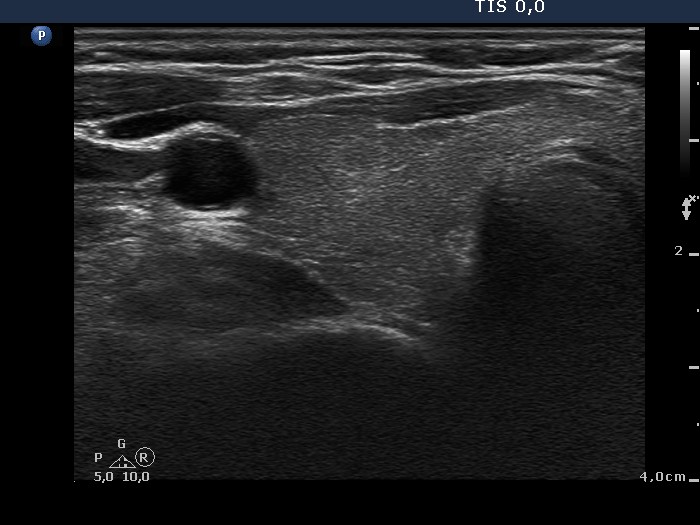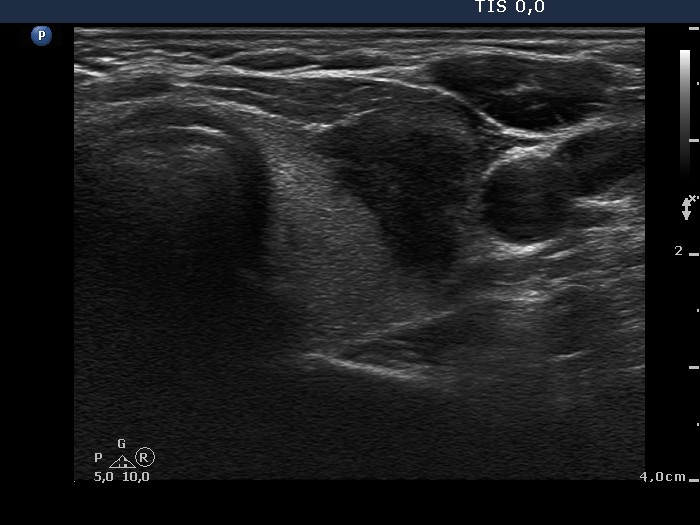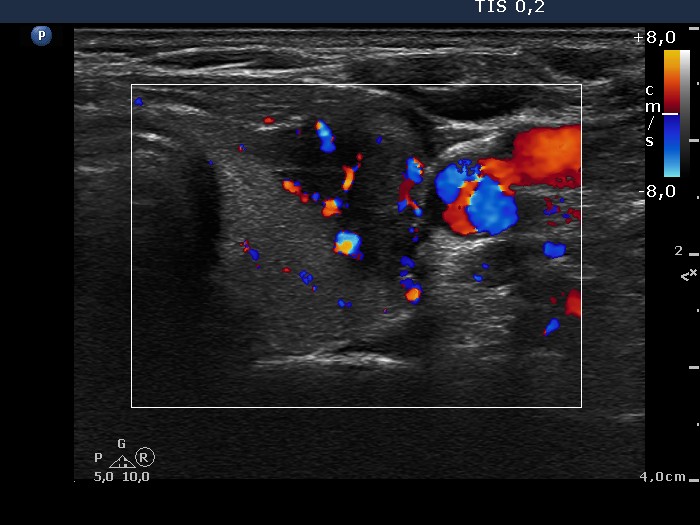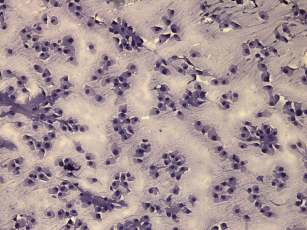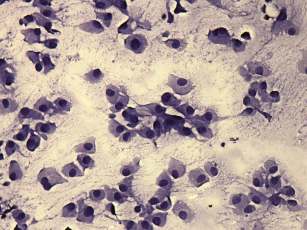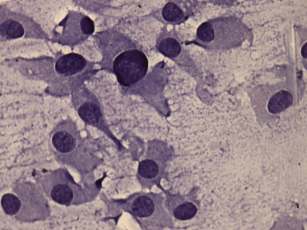Oxyphilic adenoma - Case 11. |
|
Clinical presentation: a 55-year-old woman was referred for aspiration cytology. She was treated for hyperthyroidism caused by Graves' disease for 2 years. Scintigraphy was performed at the beginning of hyperthyroidism and resulted in elevated uptake. No nodule was detected. Ultrasound was not performed. The patient felt neck discomfort and ultrasound disclosed a suspicious nodule.
Palpation: the presence of nodules were doubtful in both lobes.
Functional state: euthyroidism (TSH 0.93 mIU/L, FT4 14.1 pM/L).
Ultrasonography: both thyroids were echonormal. The ventral surface of the right lobe was uneven which caused the nodular appearance on palpation. There was a hypoechogenic nodule in the left thyroid. The nodule had blurred borders and displayed irregularly increased intranodular blood flow.
Cytological report: suspicion of malignancy. Medullary cancer or a Hürthle-cell tumor should be considered.
Serum calcitonin was measured and was in normal range.
Combined clinical-sonographic-cytological diagnosis: Hürthle-cell tumor with greater than the average risk for malignancy.
Histopathology: disclosed Hürthle-cell adenoma.
Comments:
-
In a nodule with such an ultrasound presentation, i.e. hypoechogenicity and blurred borders, subacute thyroiditis and papillary carcinoma have to be considered.
-
The cytological presentation is also suspicious. Polygonal, even triangular forms were found which raised the possibility of medullary carcinoma. However, the nucleo-cytoplasmatic ratio is less than in medullary carcinoma.


